ENT 104 Midterm 1
1/198
There's no tags or description
Looks like no tags are added yet.
Name | Mastery | Learn | Test | Matching | Spaced |
|---|
No study sessions yet.
199 Terms
Founders of Ethology
Konrad Lorenz, Niko Tinbergen, Karl von Frisch
Konrad Lorenz
studied imprinting and stimulus response
Niko Tinbergen
Studied stimulus response in simple reflexive behavior
early version of levels of analysis
Karl von Frisch
Waggle dance and social behavior of bees
Function of zebra stripes
disorient flies
Early ethologists thought animal behavior was ______
fixed and inflexible; instinctive
superstimulus
An exaggerated cue or stimulus to elicit an exaggerated response in the animal
central pattern generators
nerves that control stereotyped periodic behavior like walking
Reductionist approach
breaks down animal behavior into simple compartmentalized actions
Behavioral Ecology
Intersection between ecology, behavior, and evolution
maladaptive behavior
behavior that once had an evolutionary benefit but is now harmful in a novel environment
Sociobiology
the use of animal behavior knowledge applied to humans
Cons of sociobiology
much of human behavior is based on learning
human behavior is much more complex than animal behavior
current topics popular in animal behavior
social behavior (using social insects as a study)
Reproductive behavior (using birds as a study)
Why is evolutionary theory not always useful?
behavior can be maladaptive (not evolutionarily grounded; novel environments)
Behavior can be biologically based but not explainable by evolution
stimulus response models
Imprinting (ducks)
superstimulus (fish)
example of maladaptive behavior
Jewel beetle
phenotypic plasticity
when one genotype produces multiple phenotypes
phenotypes are produced in different contexts
daphnia experiment
1- collected daphnia and predatory larvae
2- collected chemicals from predatory larvae
3- raised daphnia in conditions with or without the chemical
4- daphnia raised with chemical developed spines while daphnia raised without did not
daphnia experiment takeaways
-ecological environment is critical to behavior (biotic interactions)
-early research is not always correct (correlation is not direct causation)
-simple cues can be a reliable indicator
Scientific method
- observation
- hypothesis
- experiment
- reject or fail to reject the hypothesis
- refine the hypothesis and repeat
Scientific experiment
manipulation of variables in a situation so that only one variable is different (must have control and treatment)
Inclusive fitness theory (kin selection)
genes can spread via your offspring or the offspring of a relative
relatedness asymmetries
individuals will choose to help closer relatives over more distant relatives
Worker policing
workers eating other worker eggs
single mated hypothesis (worker policing)
workers are more related to their sister’s offspring than to the queens offspring, therefore they should favor worker production of males and SHOULD NOT police
multiply mated hypothesis (worker policing)
workers are more closely related to the queen’s offspring than their sister’s offspring, therefore they should favor queen production of males and SHOULD police
Worker policing experiment (honey bees)
honey bees should police because they are multiply mated
inserted both queen and worker eggs into honey bee nest
recorded rate of removal for each
queen laid eggs removed at a much lower rate, worker laid eggs removed very quickly
confounding variables
something that cooccurs with treatment, that wasn’t controlled for
common confounding variables: age + experience; genotype + environment
Egg Confounding Variable Experiment (Ratnieks and Visscher 1989)
worker eggs are much smaller and more misshapen
maybe workers remove eggs because they are less viable?
experiment: hatch eggs in incubator, preventing worker removal of eggs to test viability
found no difference in viability
Kin selection alternative hypotheses
Kin selection: relatedness asymmetry leads workers to remove eggs
Superorganism: colony efficiency is improved if workers remove eggs
Prediction table
helps show what variables are needed to test to support a hypothesis
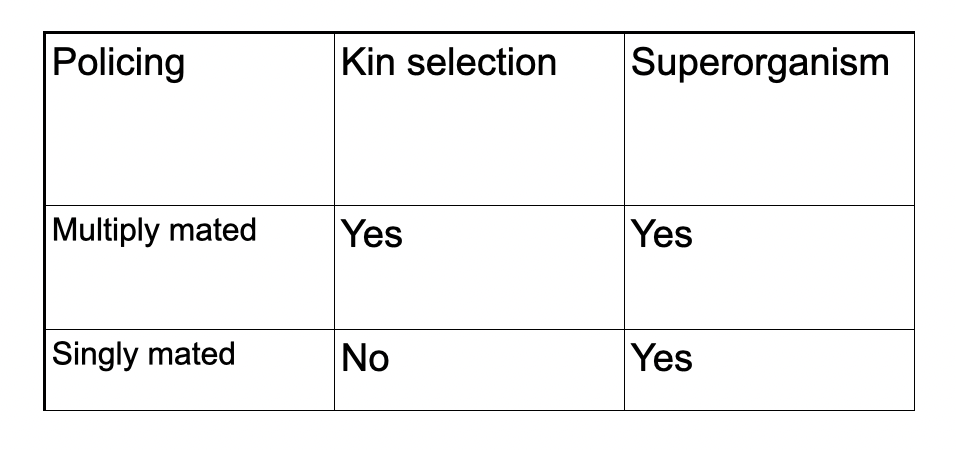
Superorganism experiment (worker policing)
tested egg hatching rates in real nest instead of incubated
queen eggs are more likely to hatch
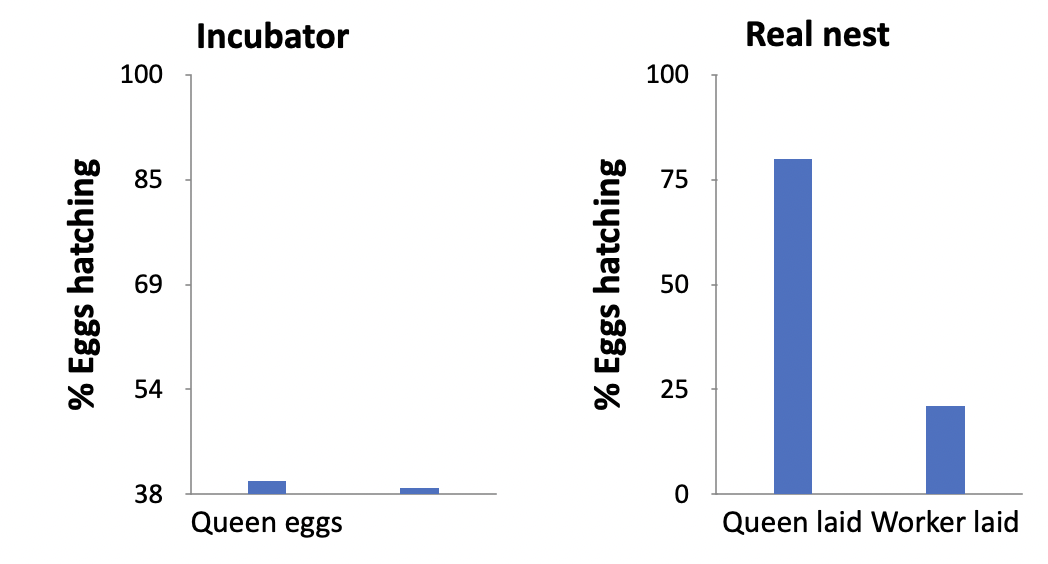
experimental artifact
when result is dependent on artificial situation (eg incubator)
examples: in vitro vs in vivo (works in petri dish, not in animals); lab vs field
correlation not causation
pattern that matches expectation doesn’t mean it caused it
eg best male peacock is loudest, biggest, most colorful. But these traits are all associated
not mutually exclusive
all variables can be true
eg the best male peacock can be a combination of the loudest, biggest, and most colorful
Honey bee Division of labor
caste defined by age group
each caste has distinct physiology and hormonal basis
hormones control differential gene expression between castes
Throw away caste hypothesis (Amdam et al)
foragers only live a short time
no point investing in forager immune system
foragers should adaptively down regulate their immune system
Evidence for throw away caste hypothesis
foragers have lower:
antioxidants
white blood cells
gene expression of AMP
BUT never actually measured immune system properties
Throw away caste hypothesis Follow up experiments
infected nurses and foragers with various pathogens
measure survivorship, gene expression, and metabolic activity
found foragers actually have strongest immune system
Foragers are not expressing AMPs because they already have antimicrobial proteins
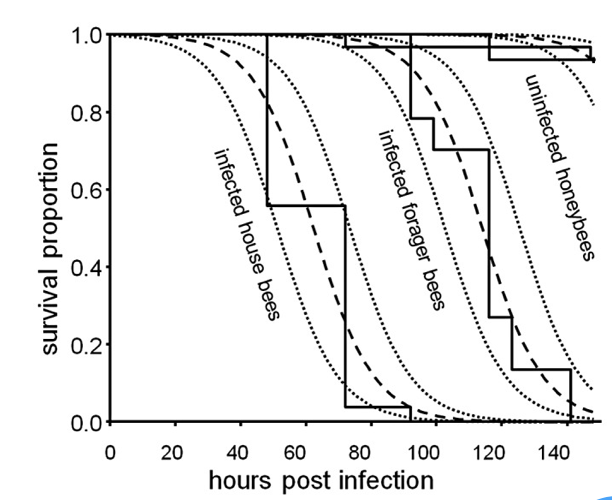
Throw away caste hypothesis Takeaways
using simple proxies instead of measuring the actual variable can lead to mistakes. Although the proxy (low white blood cell count, low gene expression) are usually indicative of low immune function, they do not prove it. In is necessary to test the real response
Evolution
change in biological systems over time
3 drivers of evolution
natural selection (adaptation)
Drift (random changes)
major random events (eg major geological events)
Natural selection criteria
1- variation
2- heritability
3- differential reproductive success
continuous variation
variation curves (eg height, weight)
discrete variation
noncontinuous traits (eg flower color in mendels peas)
sources of variation
mutation
sexual reproduction (recombination)
heritability
offspring resemblance to parents
genetic inheritance
differential reproductive success
increased fitness of certain individuals
Sexual selection
competition for obtaining mates (natural selection in reproductive context)
Convergent evolution
similarity due to similar selective pressures
analogous similarities
homologous similarity
similar by common descent
systematics
process of building evolutionary trees
shows the pattern of divergence among groups of organisms
methods of tree building
older methods based on morphology
new methods use similarities within DNA
Levels of analysis (Tinbergen)
origin
current utility
developmental origin
physiological genetic mechanisms
Tinbergen levels of analysis: Why do birds have feathers?
origin: to keep warm
current utility: flight and warmth
developmental basis: genetic pathways
physiological genetic mechanisms: ?
Early insect systematics
most were wrong bc they were based on morphology
convergent evolution caused mismatches
closest relatives to insects
crustaceans, then myriapods, then chelicerates
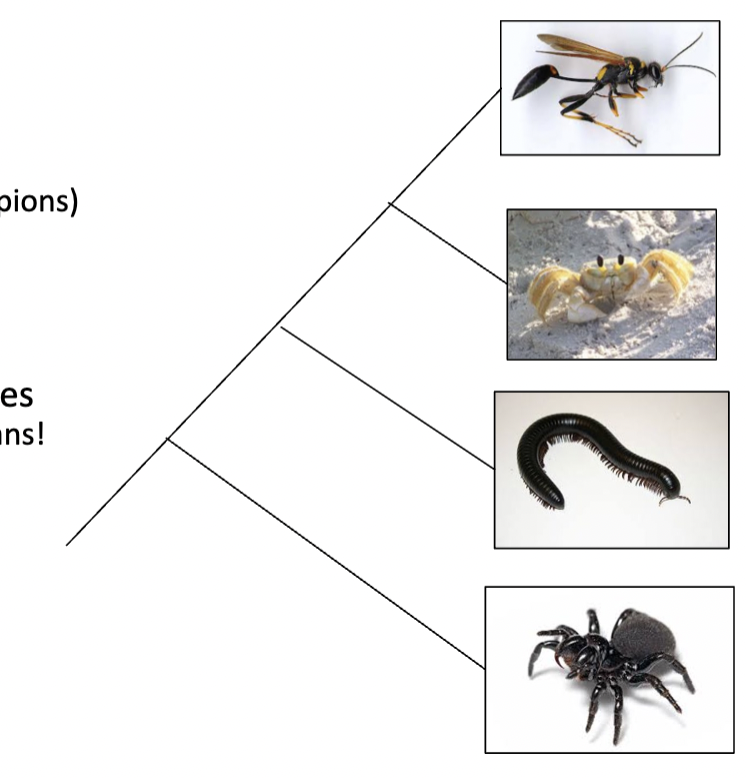
outgroups to insects
Remipedia
found in salty aquifers
small venomous predators
Brachiopoda
water fleas and fairy shrimp (mostly eat detritus)
brine shrimp (commonly used as fish food)
these crustaceans are more closely related to insects than to other crustaceans
Earliest insect fossils
412 mya
Likely insect origin
450-409 mya
progression of insect evolution
insects and plants coevolved
scavengers, then herbivores, then predators
types of traits
behavioral, anatomical, molecular (any aspect of an animals biology)
antibiotic resistance example
1- group of bacteria is exposed to antibiotic
2- most of normal bacteria die
3- genetically resistant bacteria start multiplying
4- resistant strain replaces normal strain
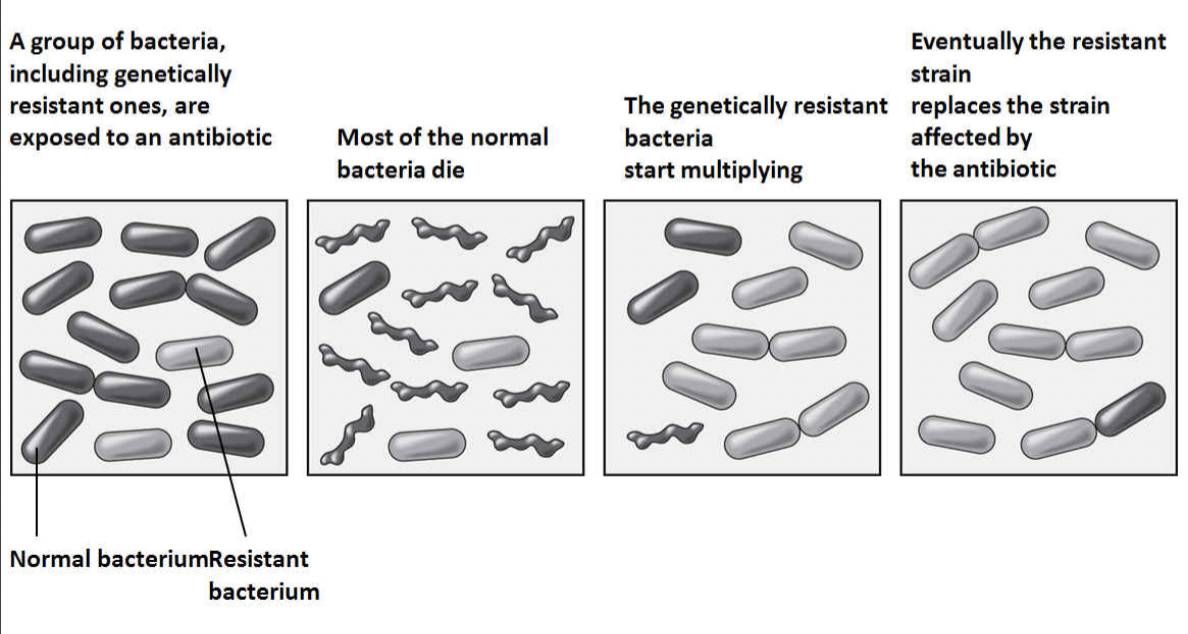
Invertebrates
no backbone
functional group (defined by common traits, not evolution)
functional group
group defined by traits rather than evolutionary history
functional groups can often be more useful in ecology
monophyletic group
group that shares a common ancestor
Major classes of arthropods
Arachnids (spiders mites, ticks, scorpions)
Crustaceans (crabs, shrimp)
Chilopods (centipedes)
Diplopods (millipedes)
(chilopods and diplopods make up myriapods)
Hexapoda/Insecta (insects)
Insects (what traits define an insect?)
exoskeleton
jointed legs
segmentation
ventral nerve cord
dorsal blood vessel
number of body segments for each type of arthropods
Insects: 3 segments, 6 legs
Arachnids: 1 or 2 segments, 8 legs
Crustaceans: 3 segments, variable no. of legs
Centipedes: 15 segments, 30 legs (one pair per segment)
Millipedes: 11-100 segments, 30-750 legs (two pairs per segment)
Groups within Hexapods
Collembola (springtails)
Protura
Diplura
Insecta


Zygentoma
fire brats, silverfish
wingless
no metamorphosis
mostly scavengers
some are pests
few hundred species?
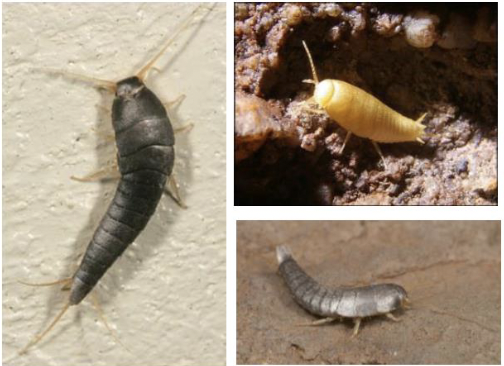
Zygentoma (silverfish, fire brats)
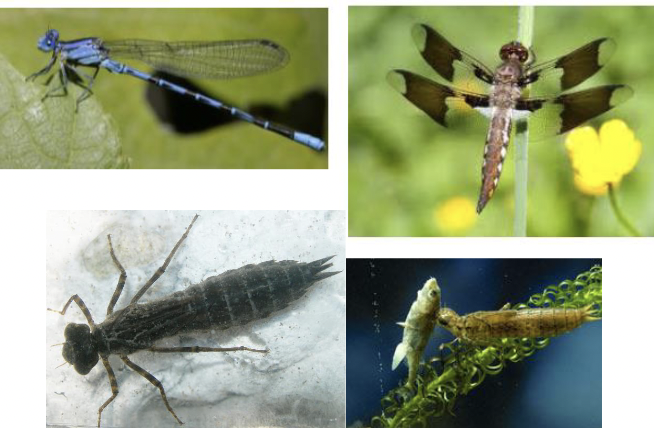
Odonata
dragonflies, damselflies
about 5500 species
fixed wings
aquatic predators as juveniles
flying predators as adults
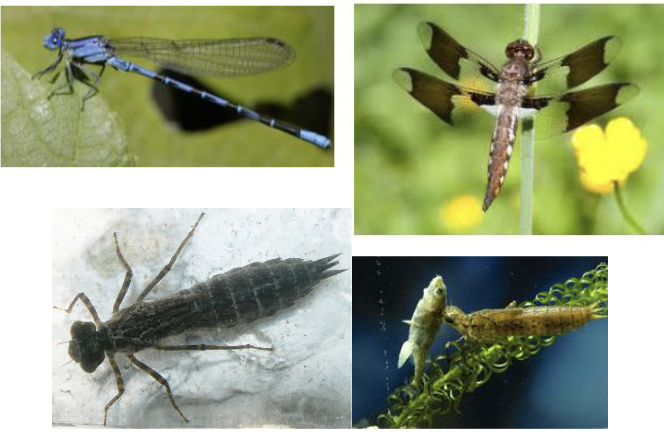
Odonata (dragonflies & damselflies)
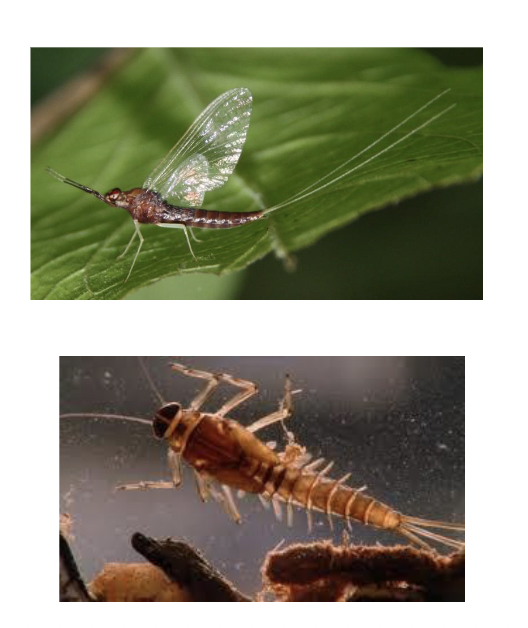
Mayflies
about 3000 species
fixed wings
mainly aquatic herbivores
two molts (subimago, imago)
adults are very short lived (dont feed, mate and die)
can be very abundant for a short period of time
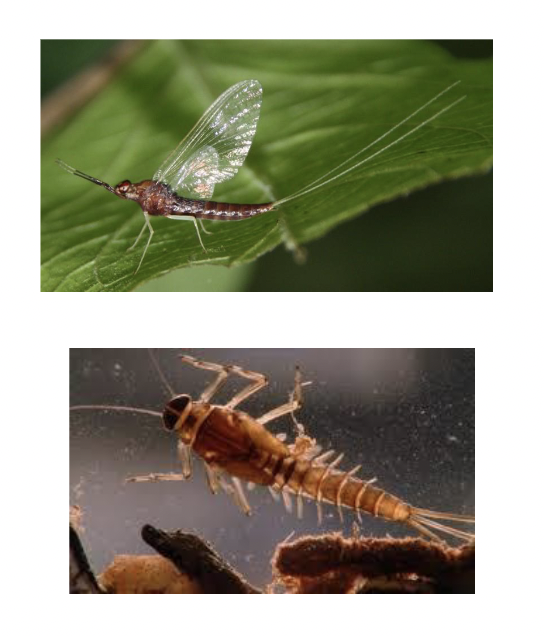
Mayflies
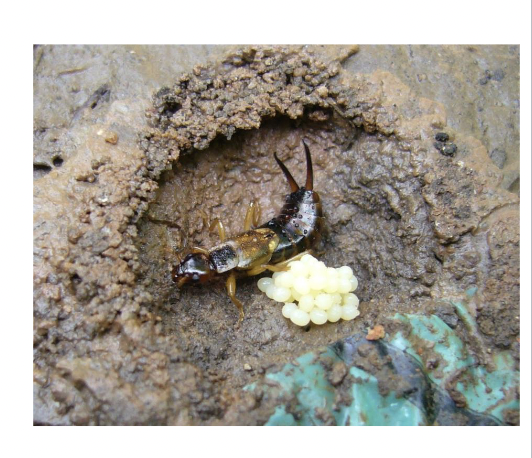
Dermaptera
Earwigs
about 2000 species
hemimetabolous (incomplete metamorphosis; juvenile looks like adult)
Mostly scavengers (some predators/ herbivores)
Most have parental care
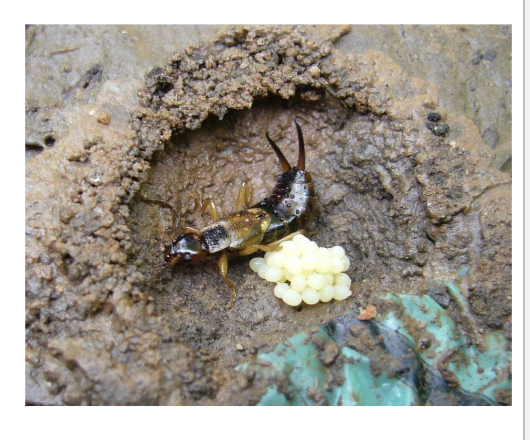
Dermaptera (earwigs)

Orthoptera
crickets, grasshopper, catydids
hemimetabolous
about 27,000 species
all herbivores
model system for many aspects of reproductive biology
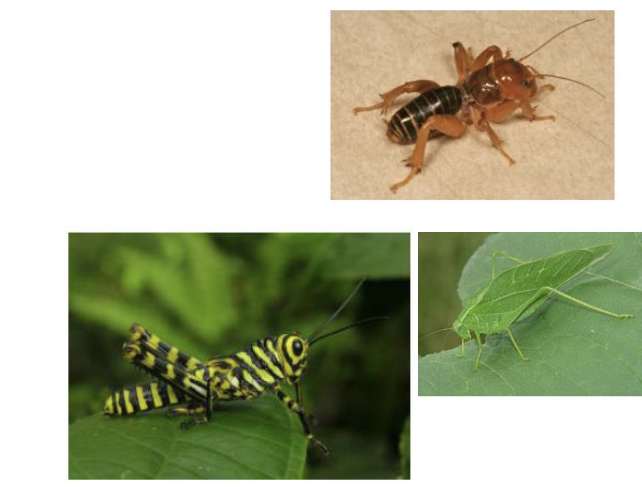
Orthoptera (crickets, grasshoppers, catydids)
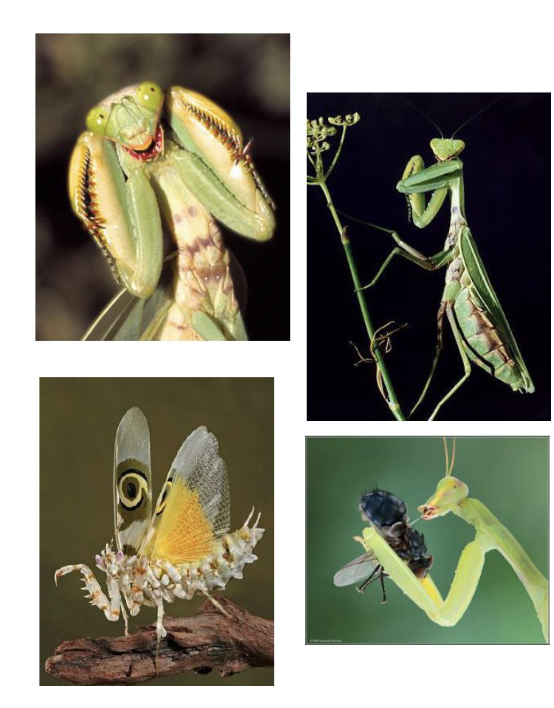
Mantodea
praying mantises
about 2500 species
all predacious
many have camoflage
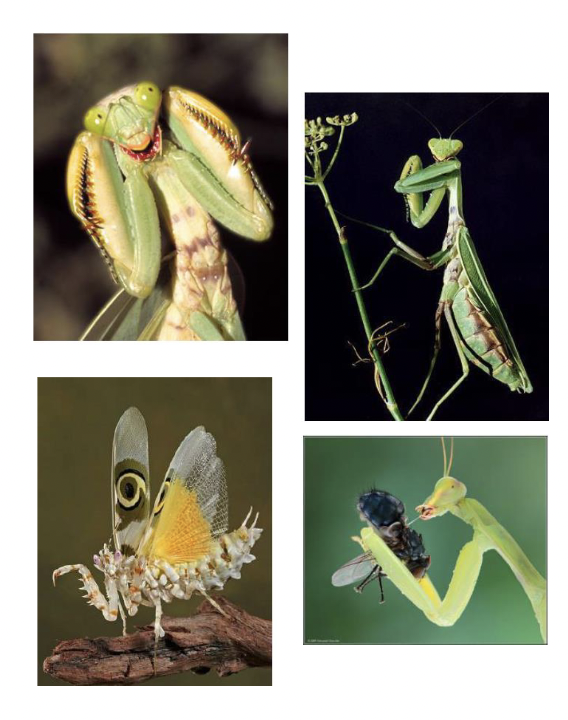
Mantodea (mantises)
Insect circulatory system
The insect circulatory system does not transport oxygen and is not a closed system, so it is low pressure
Distributed nervous system
Many small brains instead of one; each system can function on its own
How do male mantises continue mating after death?
Open circulatory system; distributed nervous system
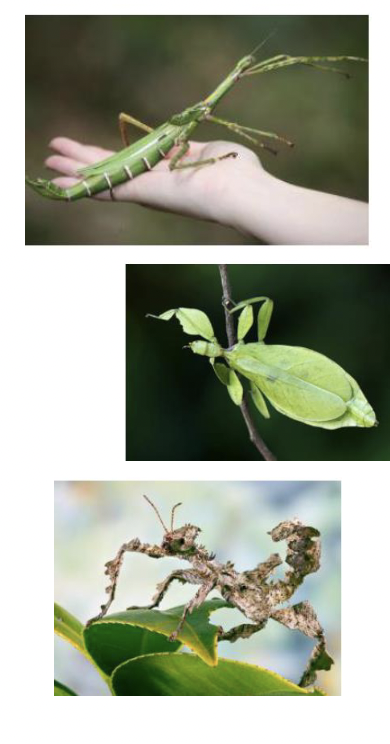
Phasmatodea
walking sticks
about 3000 species
hemimetabolous
strict herbivores( make their own cellulases)
highly camoflaged
often toxic
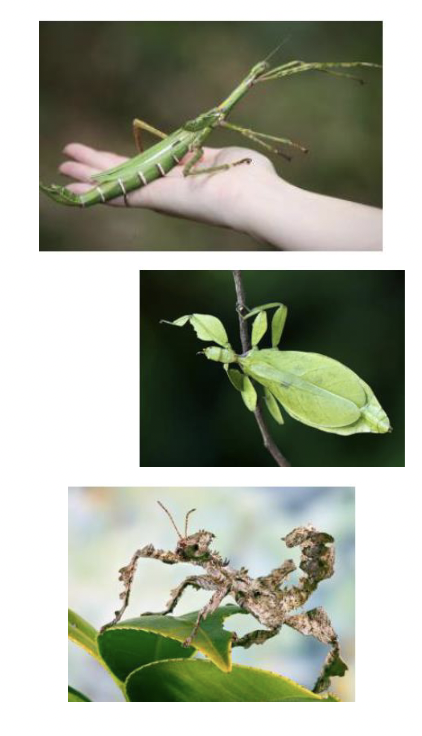
Phasmatodea (walking stick)
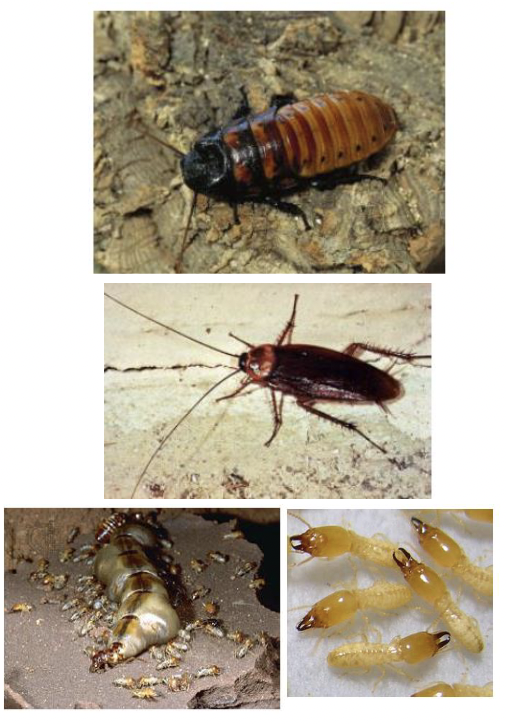
Blattodea
roaches and termites
about 4500 roach species
about 300 termite species
hemimetabolous
most are not pests
omnivorous
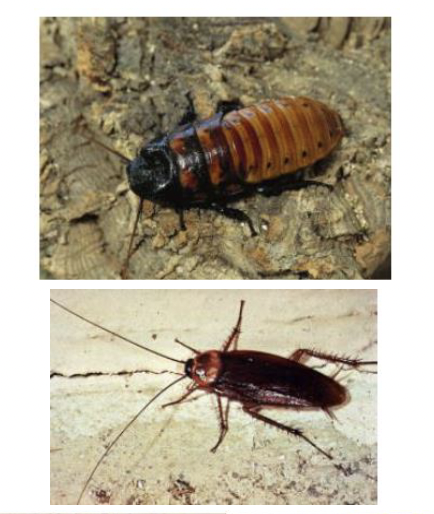
Blattodea (Roaches and termites)
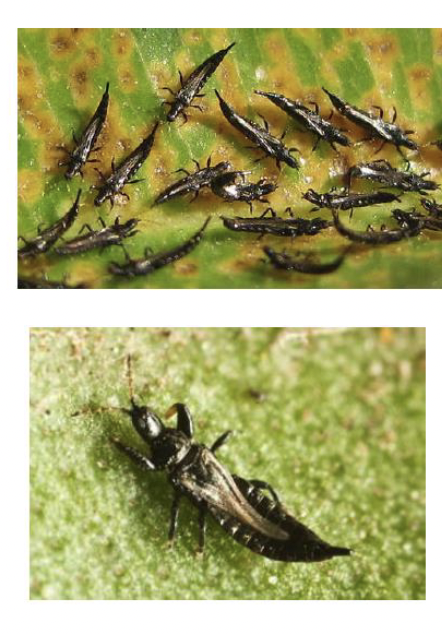
Thysanoptera
thrips
about 6000 species
hemimetabolous
tiny sucking insects (both predators and herbivores)
some vector plant diseases

Thysanoptera (thrips)
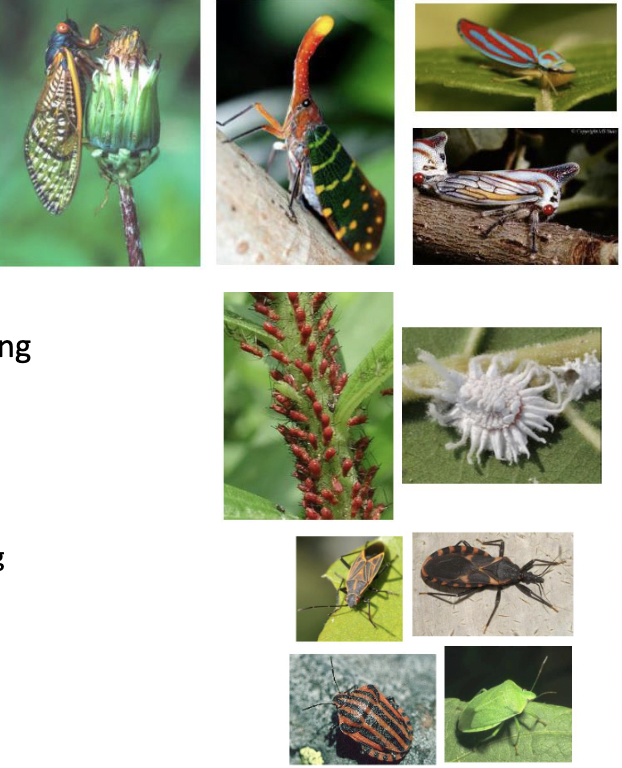
Hemiptera
true bugs
about 75000 species
all have piercing and sucking mouthparts
includes many common predator and herbivore groups (aphids, leafhoppers, kissing bugs, cicadas, scales, etc)
many pest species
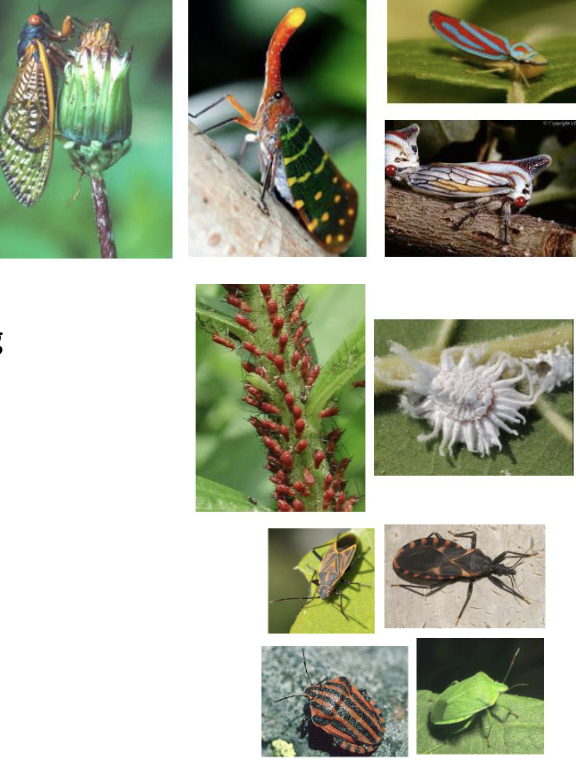
Hemiptera (true bugs)
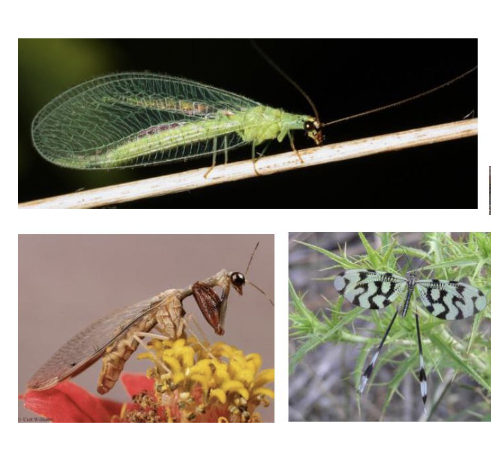
Neuroptera
lacewings
holometabolous
mostly predacious insects (as juveniles and adults)
some look like flying mantises
many brightly colored
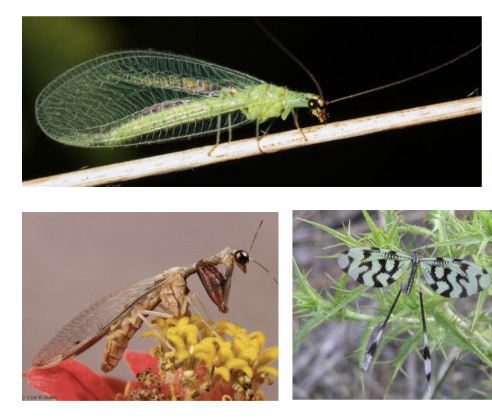
Neuroptera (lacewings)
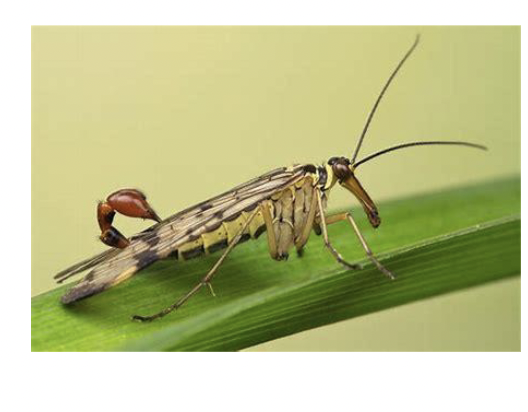
Mecoptera
scorpion flies
not flies but part of a clade including flies and fleas
about 600 species
studied for elaborate mating biology
holometabolous
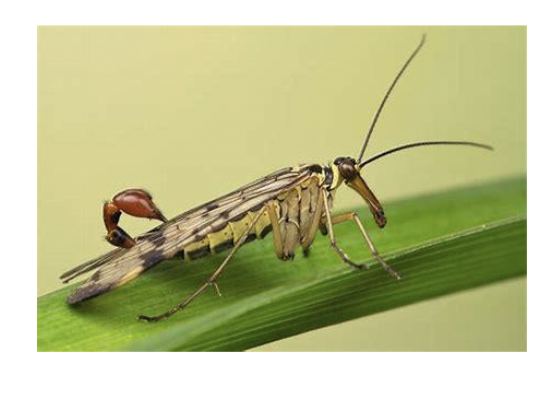
Mecoptera (scorpionflies)
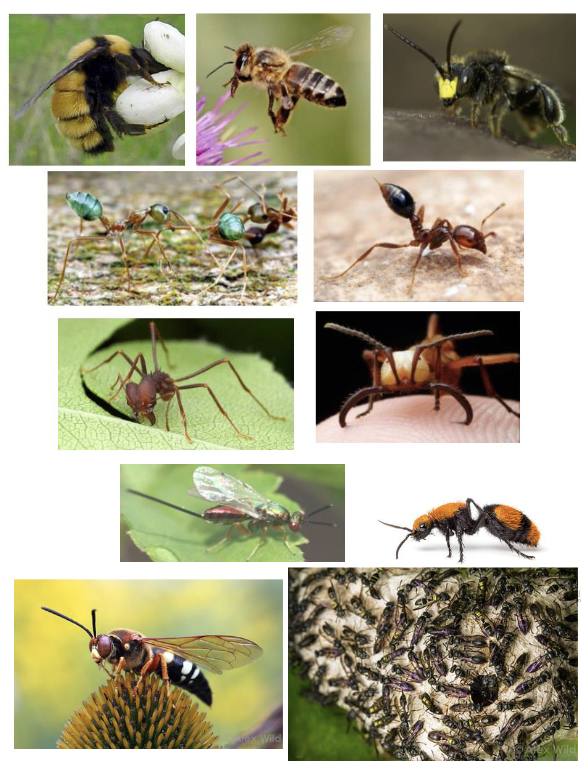
Hymenoptera
sawflies, wasps, ants, bees
more than 150000 species
most primitive group are herbivores (sawflies)
most species are parasitoids
all have ovipositors (aculeates have modified ovipositor that is a stinger)
includes most highly social insects
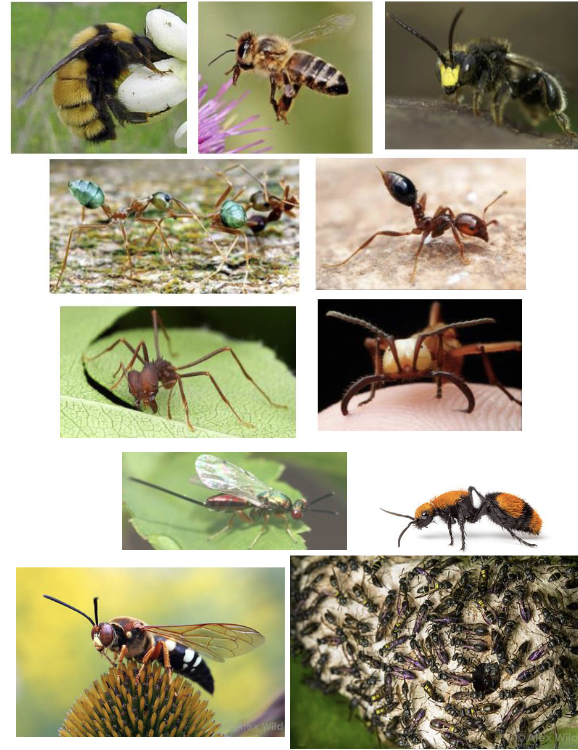
Hymenoptera (wasps, bees, ants)